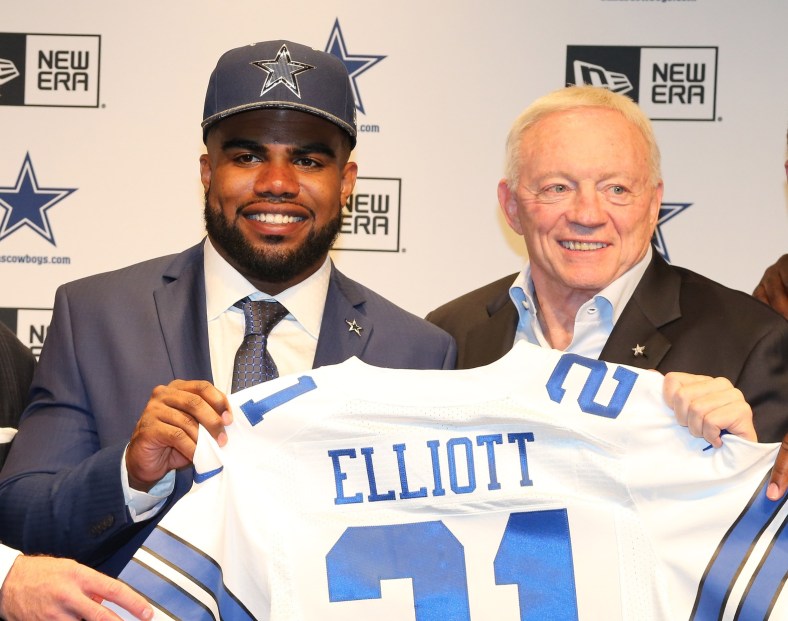
The 2016 NFL Draft has concluded. It was an eventful three days in Chicago that started with a shocking story regarding Ole Miss product Laremy Tunsil and ended with the Tennessee Titans actually trading up for the final pick in the draft.
In between, the Jacksonville Jaguars turned some heads with two huge value picks in the first two rounds.
Meanwhile, the Dallas Cowboys went talent over need with Ezekiel Elliott in the first round before nabbing an injured star in Jaylon Smith in the second round.
Moving their way up and down the draft board, the Cleveland Browns exhausted 14 picks while adding capital for future drafts.
All that was extremely interesting, but one of the biggest takeaways of the draft had to be how the quarterback situation played out. Considered by some a late-round pick at best, Penn State’s Christian Hackenberg went off the board to the New York Jets in the second round.
Hearing his named called late in the first round, former Memphis quarterback Paxton Lynch now joins Mark Sanchez in a potential battle for the starting job for the defending champion Denver Broncos.
These are among the top-10 takeaways from the 2016 NFL Draft.
1. Jacksonville Jaguars turnings heads
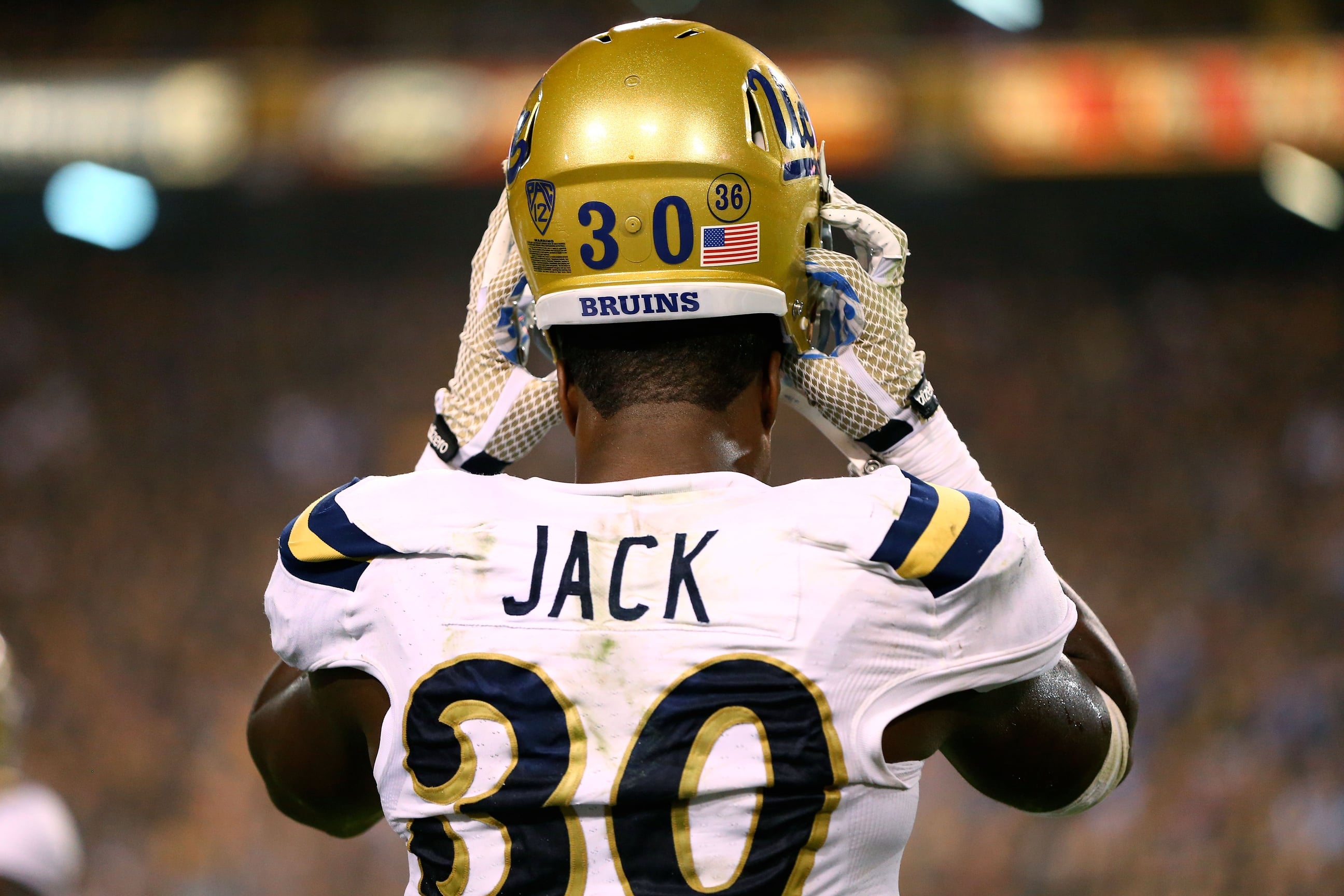
Value. Need. Talent. These are three areas a team must check off in order to have a solid draft. Not only did the Jaguars check off these three areas, they did so with pretty much every pick.
It started with former Florida State defensive back Jalen Ramsey with the fifth overall pick on Thursday. By virtue of both the San Diego Chargers and Dallas Cowboys passing up on the consensus top defensive player in the draft, Gus Bradley added a combination of Richard Sherman and Earl Thomas from his Seattle days.
Jacksonville then doubled down on defense in the second round, nabbing a player in Myles Jack that many had as a top-five overall prospect. The former UCLA linebacker dropped to pick No. 36 primarily due to concerns over a knee condition that could shorten his career. It’s a risk the Jags simply had to take at the top of the second.
 Taking a deeper look at Ramsey and Jack, it’s readily apparent that the Jaguars’ primary focus was to add high-upside athletes that already boast pro-ready skills.
Taking a deeper look at Ramsey and Jack, it’s readily apparent that the Jaguars’ primary focus was to add high-upside athletes that already boast pro-ready skills.
That’s a rarity in the draft. It’s also something the team needed with what had been a talent-stricken defense.
Add in the return of 2015 first-round pick Dante Fowler Jr. from an injury that cost him his rookie season, and the Jaguars now have three elite-level defensive players to build on moving forward. With one of the most talent-laden offenses in the NFL, this should set Jacksonville up well in the AFC South moving forward.
General manager David Caldwell wasn’t done there. Jacksonville found value at a need position with former Notre Dame defensive tackle Sheldon Day in the fourth round.
The 6-foot-1, 293-pound Day doesn’t have the frame that stands out on tape. But he was a dominating interior lineman for the Irish during his tremendous career in South Bend. That was a darn good pick right there.
2. Dallas Cowboys drafting for the future
Former Ohio State running back Ezekiel Elliott was definitely a pick for 2016 as well as over the long-term. He’s a generational running back, someone that will put up All Pro numbers out of the gate behind the league’s best offensive line.
The only real issue here was need. Dallas had just signed former Washington running back Alfred Morris in March, a running back that had put up 1,200-plus total yards in each of his first three NFL seasons before struggling last year. With Darren McFadden (1,400 total yards last season) already on the roster, the need might not have been there.
This isn’t to say Dallas made a mistake. Instead, the team made the decision to go talent over need.
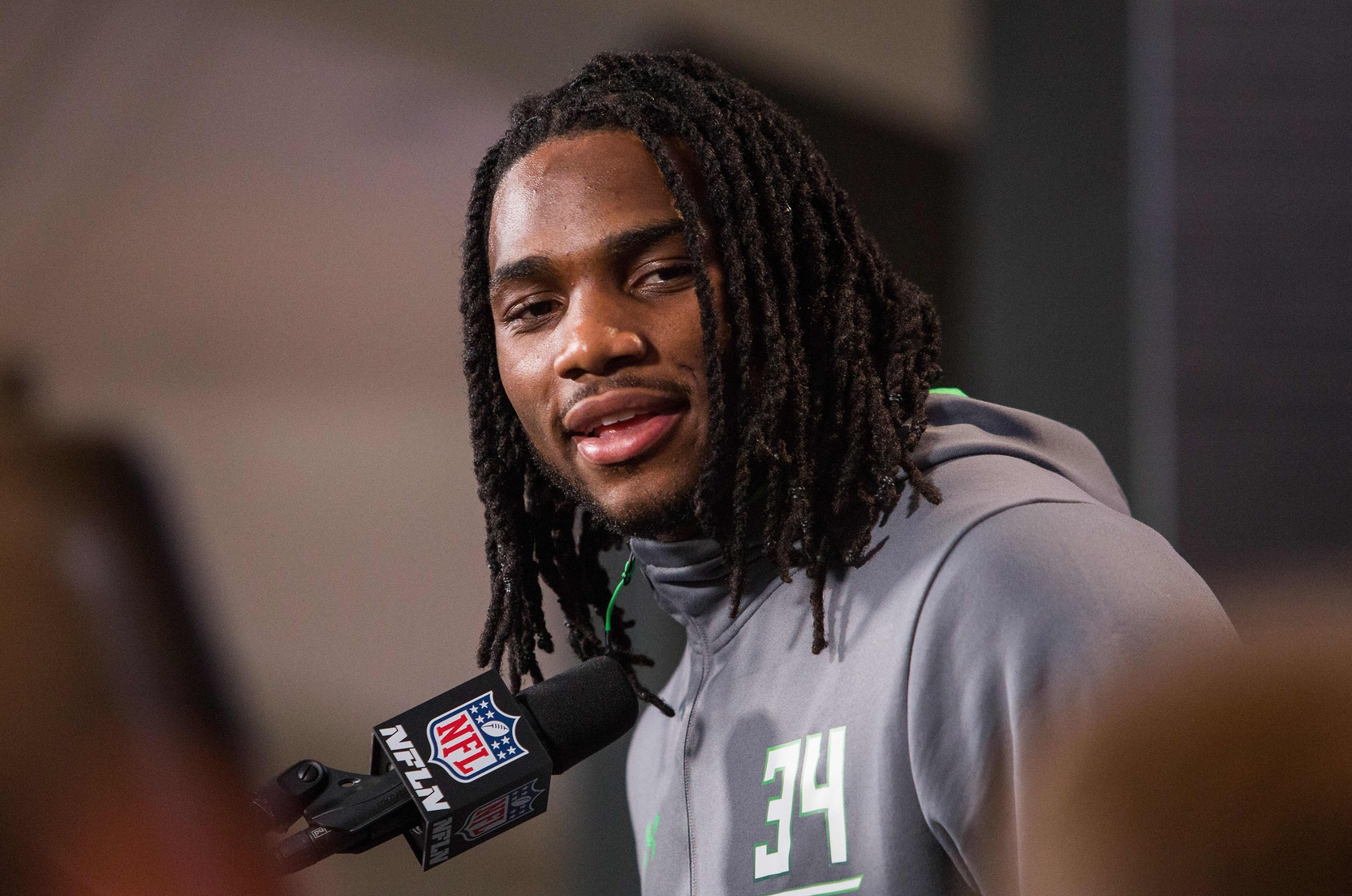
It’s the second-round pick that’s questionable. Notre Dame product Jaylon Smith was considered one of the top overall prospects in the 2016 NFL draft prior to suffering a serious knee injury in the Fiesta Bowl this past January. The linebacker is now going to sit out the entire 2016 season with said injury.
Unfortunately, there’s no telling whether Smith will ever return to earlier form. He’s said to potentially have nerve damage in the knee, a clear indication that selecting him at the top of the second round was a major risk.
Risk or not, Dallas isn’t going to get any production from a top-40 pick in 2016. That’s a clear sign the team is drafting for the future there.
Dallas did add pro-ready defensive linemen Maliek Collins and Charles Tapper in the third and fourth rounds respectively. Considering both Randy Gregory and DeMarcus Lawrence are suspended for the first four games of the 2016 season, this was a tremendous need. Add in the unlikely return of free agent Greg Hardy, and that need was magnified even further.
After missing out on Paxton Lynch and Connor Cook in trade-up opportunities earlier in the draft, Dallas picked up former Mississippi State quarterback Dak Prescott in the fourth round.
Extremely talented, Prescott is simply going to be a project signal caller to learn behind Tony Romo moving forward. It most definitely was not a pick for the 2016 season.
3. The marijuana issue
Former Mississippi offensive tackle Laremy Tunsil felt the brunt of the marijuana issue when he fell from a likely top-five pick to the 13th selection after a video was leaked of him smoking marijuana. While this video is said to be years old, it cost Tunsil millions of dollars.
The talented prospect, someone many had pegged as the top overall pick a month ago, isn’t the only one to be impacted by a league that continues to be behind the times when it comes to marijuana.
 for a domestic violence incident.
for a domestic violence incident.
Detroit Lions general manager Bob Quinn addressed this issue during the draft:
“I think you have to take everything into consideration,” Quinn said Thursday night. “If we took players off the board because they smoked pot in college or marijuana, like half the board would be gone. Realistically, that’s the day and age we live in, and you have to evaluate the risk and the rewards of the player.”
We see it every year. Talented prospects with past issues relating to marijuana dropping down and completely out of the draft. If this is what’s severely limiting the pool of youngsters heading into the NFL, indirectly impacting the product on the field, wouldn’t the league want to change its archaic policy?
Maybe that’s just too much common sense for a league that continues to make waves for all the wrong reasons.
4. The quarterback narrative
It wasn’t a surprise that Jared Goff and Carson Wentz went No. 1 and No. 2 overall, to the Los Angeles Rams and Philadelphia Eagles respectively. When those teams traded up to the top of the draft, this became relatively clear.
It was, however, surprising how the quarterback situation played out after that.
Former Penn State quarterback Christian Hackenberg, considered by most a late-round pick at best, was selected by the New York Jets in the middle of the second round. He was the fourth quarterback off the board, ahead of the likes of Connor Cook, Cardale Jones and Dak Prescott.
While Hackenberg won’t be asked to start immediately, he’s going to face tremendous pressure in the nation’s largest media market. That’s not an ideal scenario for a quarterback that has failed to progress after performing at a high level as a freshman back in 2013.
Cook falling to the fourth round was also a major story here. There was some talk about the Michigan State product inching his way into the first round, but concerns over a supposed lack of leadership and his pre-draft struggles dropped the quarterback to the third day.
 Even more interesting, the Oakland Raiders traded up for Cook near the top of the fourth round. With Derek Carr entrenched in as the starter, it was definitely a surprising move for the Raiders.
Even more interesting, the Oakland Raiders traded up for Cook near the top of the fourth round. With Derek Carr entrenched in as the starter, it was definitely a surprising move for the Raiders.
Though, they did acquire extreme value in the former Spartan — value that might be able to pay off down the road in the form of a trade.
After missing out on Paxton Lynch in the first round and Cook in the fourth round following failed trade-up attempts the Dallas Cowboys “settled” on former Mississippi State quarterback Dak Prescott.
This is the best possible fit for Prescott, as he won’t be asked to start at any time in the near future unless a bevy of injuries take hold at the quarterback position. Growing up a Cowboys fan, Prescott couldn’t have been happier landing in Big D. Though, this tweet from a few years back could make things awkward in Dallas.
In all seriousness, that was an excellent pick for a Cowboys team that needed some new blood behind Tony Romo on the depth chart.
Speaking of an excellent move, the Buffalo Bills added former Ohio State quarterback Cardale Jones in the fifth round.
Despite an incredibly small sample size (11 starts) in college, Jones’ upside is through the roof. This made a lot more sense than pre-draft rumors that had the Bills targeting Hackenberg. It also ensures Tyrod Taylor will be Buffalo’s starter next season.
The three-day draft concluded without former Oregon quarterback Vernon Adams being selected. That was one of the biggest shockers of Saturday.
All in all, most of the teams that selected quarterbacks in the 2016 NFL Draft were extremely smart in how they went about it. There are obviously some exceptions here, but draft boards played out well for those involved.
5. Teams doing work in the mid-to-late rounds
After missing big time with their selection of Will Fuller in the first round, the Houston Texans found tremendous value in fellow wide receiver Braxton Miller in the third round.
A quarterback-turned pass catcher, Miller already boasts a pro-ready skill-set and has one of the highest upsides in the draft class.
Houston was then able to add a solid safety prospect in K.J. Dillon with their fifth-round pick. Safety is an area the team needed to address, especially from a coverage standpoint. The team did just that.
Pretty much par for the course, the Seattle Seahawks dominated the middle rounds of the draft this past weekend. After reaching a tad for former Texas A&M offensive lineman Germain Ifedi in the first round, Seattle nabbed a first-round talent in the form of Alabama defensive tackle Jarran Reed in the second round.
He should immediately replace the recently departed Brandon Mebane as the team’s run-stuffing defensive tackle.
Then, attempting to find a replacement for the retired Marshawn Lynch, Seattle picked up talented young running back C.J. Prosise in the third round. The former Notre Dame standout is coming off a 2015 campaign that saw him put up over 1,300 total yards while averaging 6.6 yards per attempt.
Another team that killed the mid rounds was the New York Giants with safety Darian Thompson (third round), running back Paul Perkins (fifth round) and tight end Jerell Adams (sixth round). These were three positions of utmost need for the Giants, all of which represented tremendous value.
6. Best and worst drafts
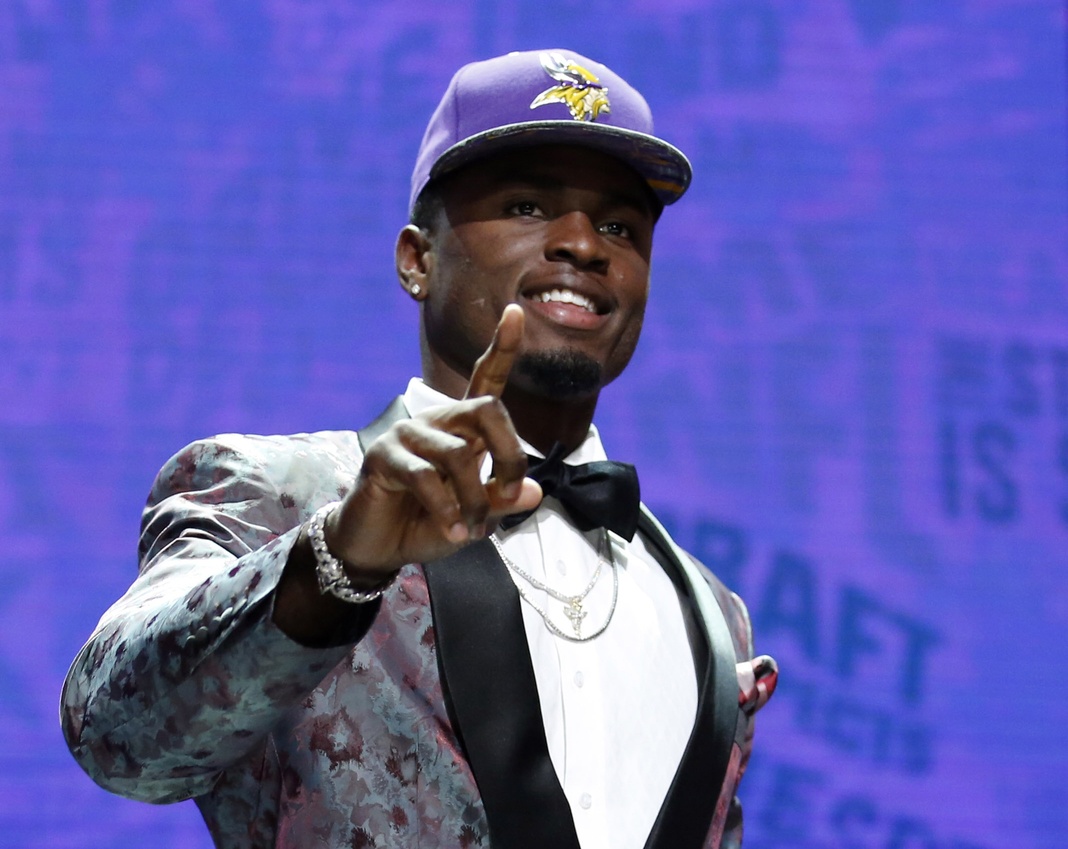
It’s rather obvious the Jacksonville Jaguars had the best draft, but we focused on them above. Instead, let’s go with the Minnesota Vikings.
Nabbing my top wide receiver in the class, Mississippi’s Laquon Treadwell, with the 23rd pick was an absolute steal. At 6-foot-2 and 221 pounds, the Ole Miss product is a perfect fit for this team’s offense. He provides Teddy Bridgewater with a huge target that possesses a large catch radius. This is something the team missed last season.
Then, in the second round, Minnesota was able to grab a corner in Mackensie Alexander who many had a top-20 grade on. A shut-down guy by definition, Alexander’s stats at Clemson were limited because opposing quarterbacks simply avoided him on an island.
With the likes of Xavier Rhodes and Trae Waynes on the roster, Minnesota can afford to ease Alexander into the rotation. It also gives the team three young corners to work with moving forward.
Potentially the best value pick in the entire draft, Minnesota added former Missouri linebacker Kentrell Brothers in the fifth-round. He was considered a mid Day 2 pick heading into the draft, and will be able to compete for the starting inside linebacker job at some time in the not-so-distant future.
The worst pick of the draft might have been Christian Hackenberg to the New York Jets in the second round, but that team did pretty well with its other selections.
 On the other hand, the Philadelphia Eagles’ draft was an absolute disaster. Trading a bounty for potential franchise quarterback Carson Wentz was questionable at best.
On the other hand, the Philadelphia Eagles’ draft was an absolute disaster. Trading a bounty for potential franchise quarterback Carson Wentz was questionable at best.
Now, with the Sam Bradford situation not getting any better, quarterback becomes a question mark for Philadelphia moving forward.
That’s only magnified by the fact that Philadelphia doesn’t have the confidence in the small-school quarterback to start out of the gate.
Not only is it a bad thing to select a quarterback that won’t play as a rookie in the top five, add in the fact that Philadelphia lost out on multiple early-round picks in 2017 and 2018 due to this deal, and that’s magnified even further.
Missing out on a second-round pick and their own third rounder, the Eagles then reached for guard Isaac Seumalo to conclude Day 2. Picked 79th overall, the Oregon State product wasn’t even on Bleacher Report’s Matt Miller’s top 400 big board. There’s absolutely no value in reaching for an interior offensive lineman there.
Speaking of a lack of value, nabbing former West Virginia running back Wendell Smallwood with the team’s next pick (fifth round) made little sense. Again looking at Miller’s big board, the former Mountaineer was ranked 297th overall.
Philadelphia then concluded its draft by taking multiple players with off-field concerns in the latter rounds, including safety Jalen Mills and defensive end Alex McCalister in the seventh round.
7. John Elway finds quarterback … of the future
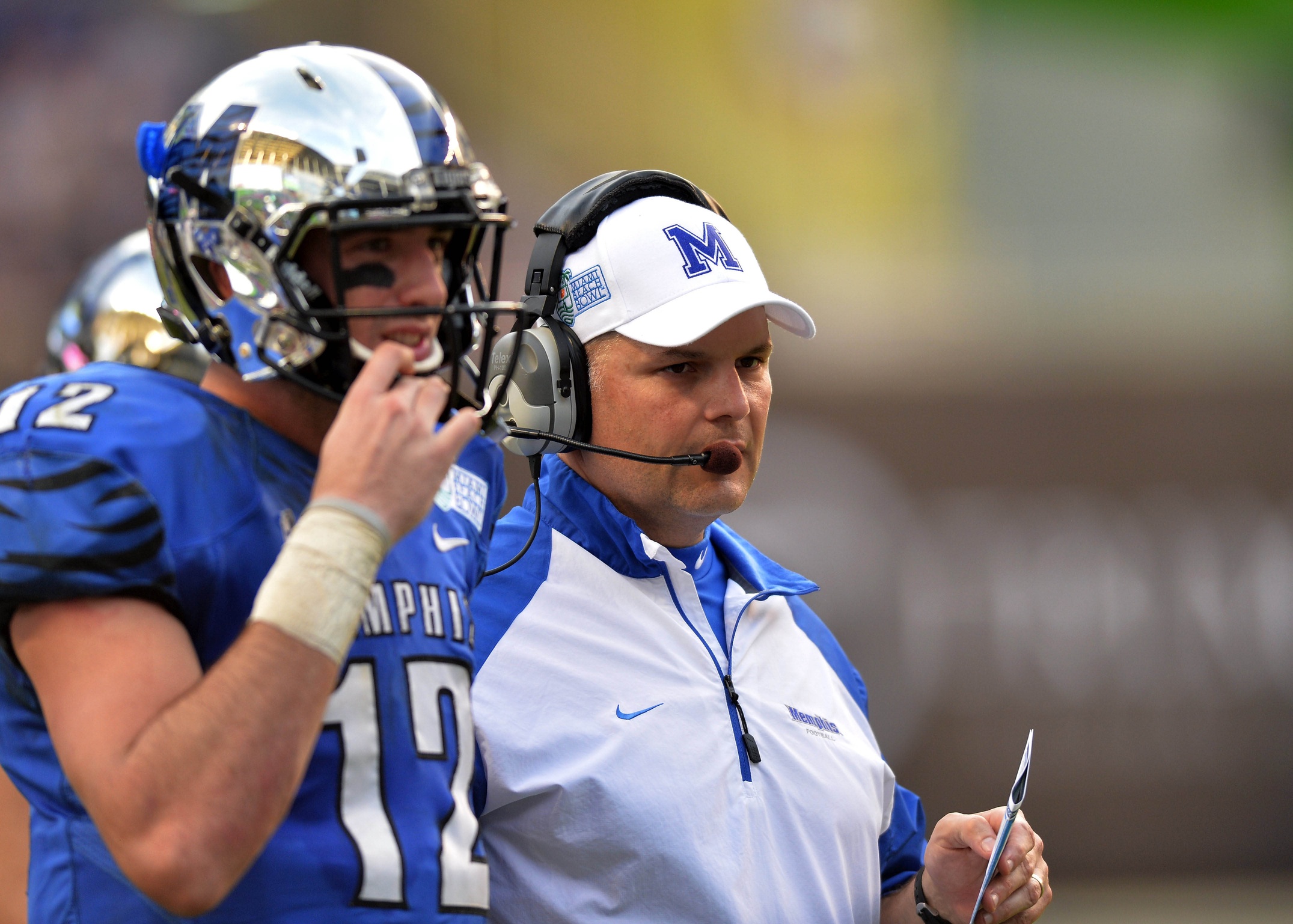
It sure looks like the Broncos are going to go into training camp with Mark Sanchez as the team’s unquestioned starter. That was made obvious after the defending champs didn’t acquire a veteran in a trade, instead deciding to trade up for Memphis product Paxton Lynch in the first round.
Don’t get me wrong here, Lynch is one heck of a product. His skill-set rivals the quarterbacks that went first and second overall on Thursday. Unfortunately, Lynch is not a Day 1 starter in the NFL. This was a pick for the future.
And while that’s perfectly fine, it doesn’t do much to address the quarterback situation in 2016. The question now becomes whether Denver can repeat with Sanchez under center?
8. Lack of trades for veterans
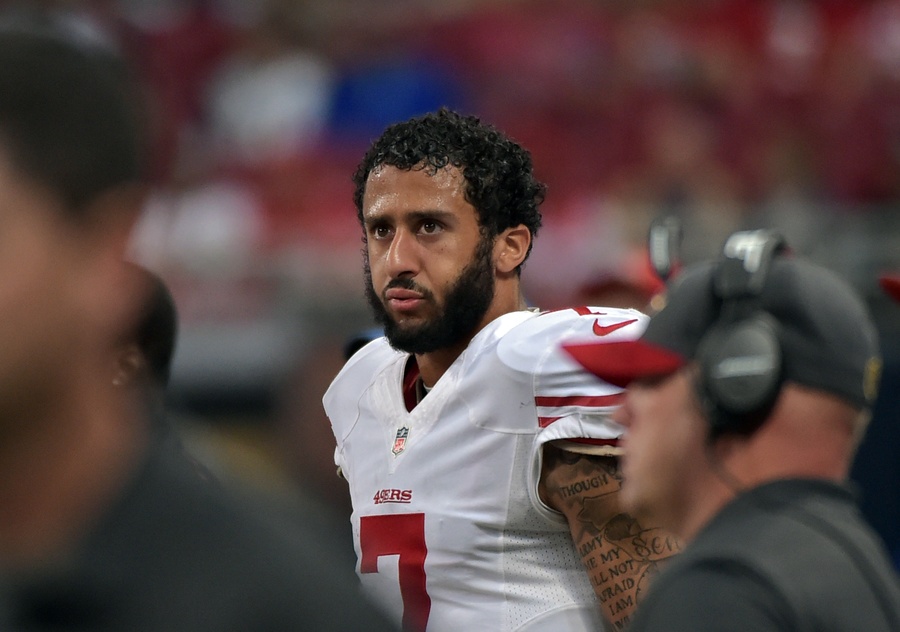
Sam Bradford, Colin Kaepernick, Josh McCown and Muhammad Wilkerson all entered the draft on the trade block. None of them were moved.
Instead, the most notable veteran traded during the three-day event was corner Jamar Taylor who went from the Miami Dolphins to the Cleveland Browns in an exchange of seventh-round picks.
Based on the trades we have seen during the draft over the past several years, it was interesting to see the lack of action go down this weekend in Chicago.
While Sam Bradford continues his hold out in Philadelphia, it’s rather clear that San Francisco is intent on going into training camp with Kaepernick battling Blaine Gabbert for the starting job.
Despite the narrative being thrown our way over the past couple days, this isn’t necessarily a bad thing if Kaepernick is willing to buy into what Chip Kelly wants to do with him.
We are sure to see veterans moved in trades between now and the start of the season. It was just pretty odd to see no one of substance dealt during the draft.
It’s also going to set up some major stories for the summer months. Will Bradford’s trade demands go unheard? If so, is he prepared to hold out of mandatory off-season activities and training camp?
Is Kaepernick about to bite the bullet and back off his trade demands? If not, will San Francisco cut ties with him completely?
9. How the Titans and Browns fared after blockbuster trades
I am not terribly impressed with what the Titans came away with following the trade down from that No. 1 spot.
Having to exhaust a third-round pick this year and a second rounder next year to move up from 15 to eight and select offensive tackle Jack Conklin didn’t make a ton of sense here.
While Tennessee did have a surplus of picks in next year’s draft, Conklin himself didn’t represent much value there. Likely scared off by the Laremy Tunsil drama, Tennessee nabbed the third or fourth-best offensive tackle in the top 10. It did so with Taylor Lewan having indicated that he’s solely on the Titans to play left tackle.
The Titans did do well to add an underrated defensive end in Clemson’s Kevin Dodd at the top of the second round. While Shaq Lawson took most of the headlines from Clemson leading up to the draft, Dodd has a tremendous amount of upside as an EDGE pass rusher in the NFL.
It is, however, Tennessee’s two other second-round picks that are alarming to me.
Former Penn State defensive tackle Austin Johnson had a mid-round grade by most experts out there. Exhausting a top-50 pick on him made little sense, especially with Jarran Reed, Maliek Collins and Jonathan Bullard still on the board.
Adding reigning Heisman winner Derrick Henry gave the Titans a splashy Day 2 pick. But was it really a major need?
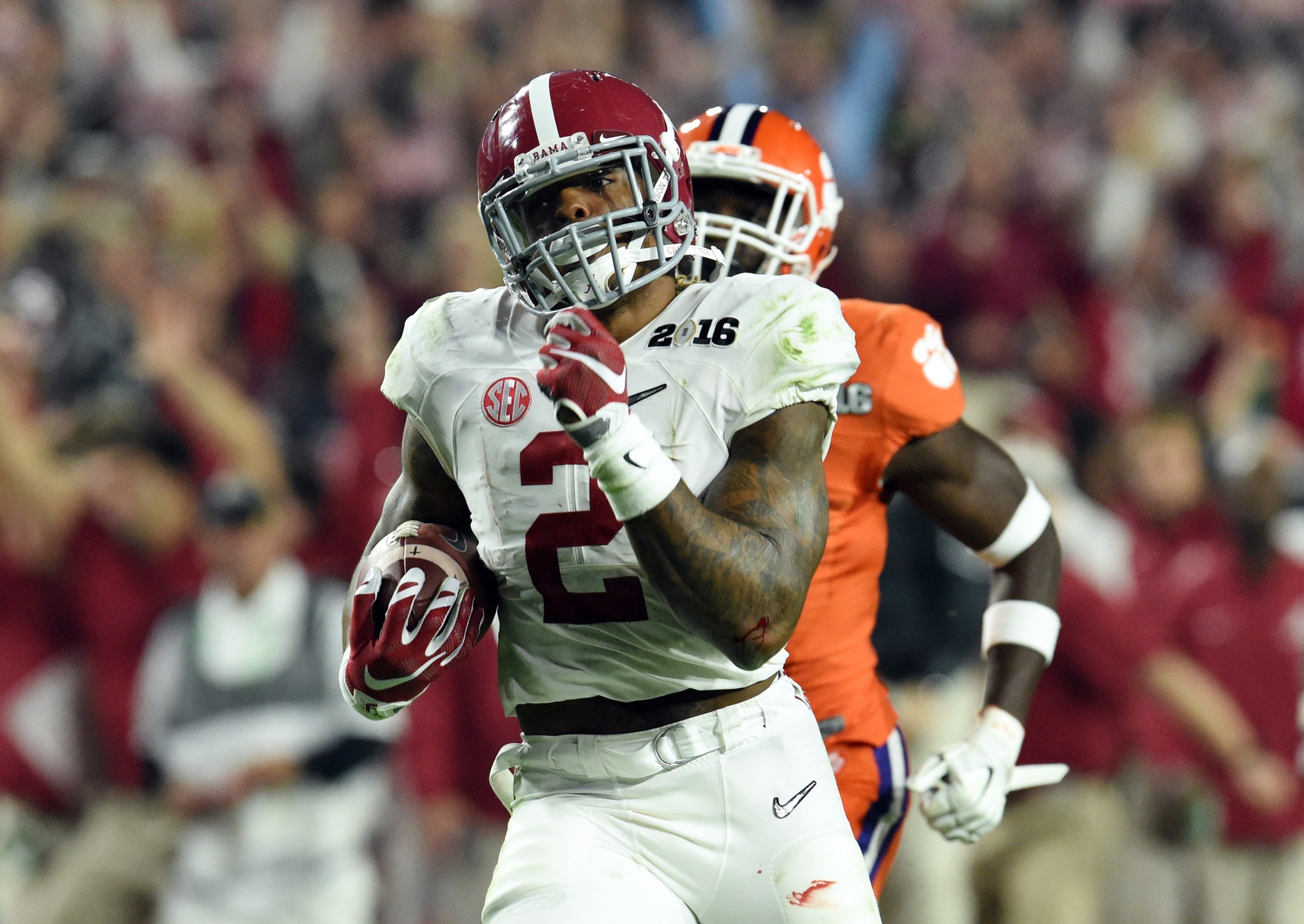
After acquiring former NFL Offensive Player of the Year DeMarco Murray in a trade back in March, the Titans could have easily found value at a need position with this second-round pick. That’s only magnified by the fact that Murray is set to count $25 million against the cap over the next four season.
The situation in Cleveland is vastly different. Going for quantity over supposed quality, new general manager Sashi Brown embarked on a plan to rebuild what has to be considered a talent-stricken roster. He did so while adding even more future picks for a team that’s obviously thinking long term.
The Browns were able to nab their top wide receiver in the class, Baylor’s Corey Coleman, with the 15th pick. This came after the team acquired a third rounder this past weekend and a second-round pick next season in a trade down from eight with the Titans.
Coleman was the first of five pass catchers that the Browns added with their ridiculous 14 picks, including an underrated Rashard Higgins in the fifth round.
Focusing on the defensive side of the ball with their next two picks, the Browns added two high-upside defensive linemen with their next two picks. Oklahoma State’s Emmanuel Ogbah, considered by many a first-round value, was taken at the top of the second round. Meanwhile, former Penn State defensive end Carl Nassib came off the board in the third round.
 While I am not a huge fan of taking former Southern California quarterback Cody Kessler in the third round, there’s some value to that pick. Cleveland didn’t exhaust a ton of value in picking him up, and he translates well to Hue Jackson’s offensive system.
While I am not a huge fan of taking former Southern California quarterback Cody Kessler in the third round, there’s some value to that pick. Cleveland didn’t exhaust a ton of value in picking him up, and he translates well to Hue Jackson’s offensive system.
The biggest takeaway here is that Cleveland not only addressed it talent deficiency in the draft, it added multiple picks in future drafts.
The Browns now own Philadelphia’s first-round pick and Tennessee’s second-round pick next year as well as the Eagles’ second-round pick in 2018.
10. Riskiest picks
Most of the talk surrounded Miami taking Tunsil with the 13th pick. Though, there’s not much risk in that pick.
The offensive tackle is not in the NFL’s substance abuse program. And in reality, smoking marijuana a couple years back isn’t necessarily a red flag to anyone outside of bah-humbug himself, Rodger Goodell.
Instead, the focus here should be on two supremely talented defensive prospects taken in the second round.
Of course, we are talking about linebackers Jaylon Smith to the Dallas Cowboys and Myles Jack to the Jacksonville Jaguars.
Their stories are by now well known. Smith suffered a terrible knee injury in the Fiesta Bowl back in January and will sit out the entire 2016 season. There’s also concern over potential nerve damage to his knee.
Meanwhile, Jack has a knee condition that could severely limit how long he lasts in the NFL.
Both were considered top-five prospects early in the pre-draft process. Both can be perennial Pro Bowl performers. Though, both could also bomb out in a big way. Spending early second-round picks on them has to be considered risky.
Looking at the first round, there really weren’t many risky picks.
Philadelphia taking a Division 2 quarterback at No. 2 overall after sending a bevy of picks to Cleveland is surely a risk.
One of the most-talented players in the draft, former Mississippi defensive tackle Robert Nkemdiche, went off the board to the Arizona Cardinals at 29. His off-field issues are by now well known, including being arrested on marijuana possession charges late last year.
Arizona does have a strong foundation in place to help the talented defensive lineman through his recent off-field struggles, so it was likely the best possible landing spot for him.
In New York, I don’t consider the selection of Christian Hackenberg a risky. It was simply a bad pick that will backfire a great deal moving forward.
Moving on to the mid-late rounds, it’s hard to make risky selections there. After all, the value in adding plus-level talent is increased a great deal, even if there are off-field concerns. Should a player not pan out, you didn’t necessarily give up a lot of capital to draft him.